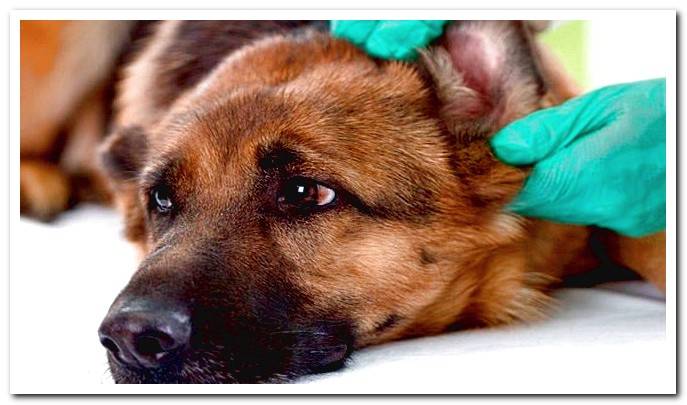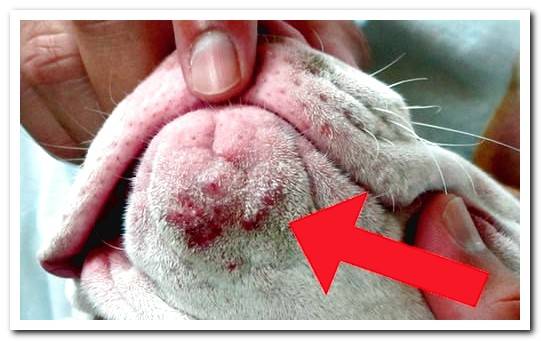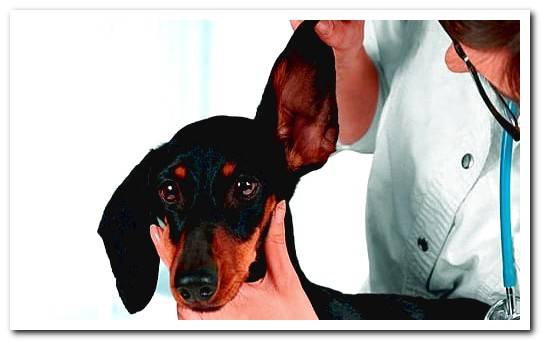
A drop in defenses, the effect of antibiotics or a hot and humid environment are some of the most common causes that are usually behind a fungal infection in dogs.
In fact, there are many types of fungus that can affect our furry friend, especially on the legs and ears. For this reason, if he presents symptoms, you should take him to the vet to be able to give him an adequate treatment.
About all this and much more, we are going to talk at Dogsis, where we will also give you some tips to take care of a dog with fungi. In addition, we will solve one of the most frequent questions in this regard: are fungi contagious? What do you think? Let’s see if you are right.
Index of contents
- 1 Most common fungi on legs and ears
- 2 Main symptoms of fungi in dogs
- 3 What is the treatment for fungi?
- 4 Tips for caring for a dog suffering from fungi
Most common fungi on legs and ears
There are many types of fungi that can affect a dog. However, some tend to focus on certain parts of the body. This is the case of the Malassezia Pachydermatis.
This fungus usually appears on the dog’s paws, as they are areas that remain humid for longer and where there is little air circulation between the fingers.
Many furry have this fungus, but most of the time it is not a problem. However, when the dog’s immune system is weakened by disease, allergy, or skin irritation, Malassezia pachydermatis can proliferate and cause discomfort.
In fact, there are some dog breeds that are more predisposed to fungal foot infections than others. For example: poodles, terriers, Chihuahuas or the german shepherds.
Fungal infections in dogs can also occur in the muzzle, groin, or ears. In the latter case, the most common infections are those caused by the yeast fungus and should be treated to avoid ear problems.

Main symptoms of fungi in dogs
Although fungal symptoms in dogs can vary, they usually The signs that should alert us are:
- Itchy fingers, pads, or ears.
- Hair loss in the affected areas.
- Flaking, inflamed, or reddened skin.
- The dog can constantly lick his irritated paws to try to calm the discomfort he feels.
- If the infection is in the ears, they may be red.
- Nail injuries.
- The dog seems more anxious and upset than usual.
- Shake your head vigorously, as if to say “NO”.
- It has traces of earwax or small crusts on the ears.
If this is the case, the way forward will be to visit a vet so that he can thoroughly examine the affected paws or ears and confirm if it is fungus. Normally the diagnosis is quite simple and it goes through seeing what the injuries are that the dog presents.
To find out the type of fungus that is affecting the dog, it is also likely that samples of hair, nails or skin will be taken for analysis in the laboratory.
What is the treatment for fungi?
The treatment of fungi in dogs can vary depending on the type of condition and the severity of the lesions it has on its paws or ears. Typically the vet will prescribe antifungal drugs.
On the other hand, the diet will be key for the dog to have high defenses again and to better fight the infection. For this, it is recommended that you eat in a healthy way. And what else can help the fungus on the dog disappear? let’s see it.

Tips for caring for a dog suffering from fungi
In order for the fungi to disappear as soon as possible and, with them, the discomfort that the dog experiences in its paws and ears, it is important to take into account a series of recommendations that will help the infection not spread. The main ones are:
- Avoid bathing the dog excessively, so that the fungi do not proliferate with the heat and humidity.
- If there are more animals in the house or children, do not let the dog sleep with them or share blankets or brushes.
- Clean your hands well after being in contact with the dog; It also disinfects the house and throws away objects that may be contaminated.
- If you are in the car or on the sofa, cover these places with a blanket or sheet beforehand and wash it regularly.
As you may have guessed with these last tips, fungi in dogs can be contagious in humans sometimes, either by direct contact with the affected legs or ears or through some objects.
Therefore, it is important to follow the treatment indicated by a professional and take all the precautions you can so that the fungi do not affect other family members and stop bothering our beloved adventure companion as soon as possible.
